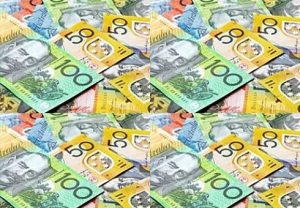Australian Dollar suffers over jobs data
20 October 2016 by News DeskAustralian Dollar investors also grew excited ahead of Thursday’s highly anticipated Australian employment stats.
 Australian Dollar suffered on poor news about Aussie job data, according to currency specialists TorFX
Australian Dollar suffered on poor news about Aussie job data, according to currency specialists TorFX
Sterling was able to take back its losses and trend near its higher levels once again on Thursday morning as markets responded to the employment results, which were highly disappointing overall.
An employment change of 15k was expected in September, but employment instead worsened by -9.8k. While the unemployment rate improved slightly, this was due to an unexpected dip in the participation rate from 64.7% to 64.5%.
As a result, the Australian Dollar lost value against most of its major rivals on Thursday as Australian markets began to speculate on the possibility of further monetary easing from the Reserve Bank of Australia.
New Zealand Dollar (NZD) – The Pound to New Zealand Dollar exchange rate continued to trend near its record low levels on Wednesday as ‘Kiwi’ investors remained optimistic on the week’s Global Dairy Trade news and other strong commodity prices left demand for risky currencies higher.
Sterling climbed from these record-lows on Thursday morning as appetite for risk-correlated currencies waned. This was due to a selloff in the Australian Dollar, as well as a dip in prices of oil.
Australian Dollar suffers over jobs data
Pound Sterling (GBP) – The Pound was able to hold its ground throughout Wednesday after rallying modestly during the previous session.
Wednesday’s most cheery British economic news was the confirmation that UK employment remained at a record-high 74.5%.
The number of jobless claims made in September was lower than expected, at 0.7k. The number of new jobs created between June and August was a better-than-expected 106k.
Markets also paid close attention to a Q&A session held by UK Chancellor Phillip Hammond, who stated that the Bank of England (BoE) would retail its independence.
Hammond also took a softer tone on Brexit than Prime Minister Theresa May has done recently and continually reasserted that the bank would be looking for the smoothest trade deal possible with the EU. He believed there were people within the EU who agreed that it would be mutually beneficial to give Britain a good deal.
Thursday’s UK retail sales figures did little to help support Sterling, coming in at a lower-than-expected 4.1% year-on-year.
US Dollar (USD) – The Pound to US Dollar exchange rate was able to hold most of Tuesday’s advances throughout Wednesday trade, but slipped slightly throughout the day and by Thursday morning was fluctuating below its best weekly levels.
Wednesday’s US data did little to influence US Dollar movement as housing data was too mixed to inspire. Housing starts plunged by -9% in September, but building permits were up 6.3% in the same month. US markets instead looked ahead to Wednesday night’s final US Presidential debate, but the debate seemingly gave the US Dollar only a light boost compared to previous debates.
Euro (EUR) – The Pound to Euro exchange rate hovered near its best levels in almost two weeks during Wednesday’s trade session.
While the pair was unable to hold its ground at its best levels, the day’s UK data and slipping sentiment towards the Euro left GBP EUR able to hold most of its Tuesday advances. The pair continued this trend on Thursday morning.
Eurozone markets are highly anticipating Thursday’s European Central Bank (ECB) meeting, at which many had previously speculated the bank would indicate that it was pulling back its quantitative easing system earlier than expected. However, after economists came to a consensus that this was unlikely, hope for the meeting faded, allowing the Euro to slump.
The most investors seem to be hoping for at this point is a more optimistic than usual outlook from ECB President Mario Draghi, as solid Eurozone inflation scores of 0.4% are likely to reassure the bank slightly.
Canadian Dollar (CAD) – After rallying with only brief pauses for a few weeks now, oil prices finally hit a yearly high in value during Wednesday’s session. Following this, investors sold the commodity off from its highest levels, causing oil prices to slip on Thursday. Despite this drop in price, sentiment towards both oil and the ‘Loonie’ remain strong.
Canadian investors were largely focused on the Bank of Canada’s (BOC) October policy meeting on Wednesday. As expected, the bank left interest rates on hold at 0.50%. Analysts had been concerned that the bank would hint that easing was needed if Canada’s economic activity did not improve, but the bank simply downgraded its 2016 growth outlook from 1.3% to 1.1%. This neutral tone from the bank’s decision left the Canadian Dollar briefly stronger, but the currency was not able to push GBP CAD down from its weekly highs.
Disclaimer: This update is provided by TorFX, a leading foreign exchange broker, its content is authorised for reuse by affiliates.
Learn more about the Australian Dollar – Contact TorFX: Get A Quote
Want to live and work Down Under? Click here for expert help: Skilled Migration to Australia
Want to get a job Down Under? Click here for expert help: How to Get a Job in Australia
Click here for expert help with travel visas: Travel Visas to Australia
Click here for tourist information about Australia: Visit Australia


